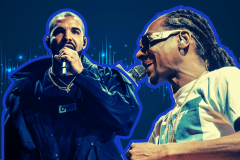Earlier this week we reported that leading online music service Last.fm, owned by CBS, had gotten major labels on board for its new streaming music services. Users will be able to stream full-length tracks from the likes of EMI, Sony BMG, Universal and Warner, as well as “thousands of independent artists and labels.”
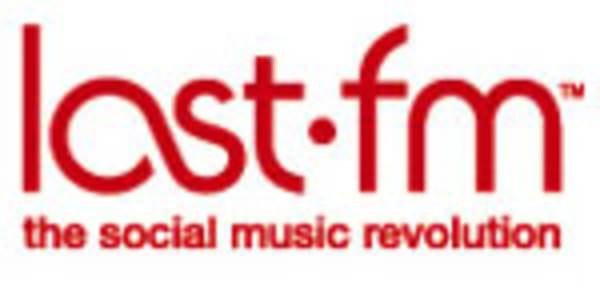
In the following post syndicated from last100, our network blog about digital lifestyles, Daniel Langendorf analyzes how last.fm is much more than a streaming service – it is aiming to create “communities around content”.
During the CBS-Last.fm announcement this week, CBS president and CEO Leslie Moonves said the company was looking into developing communities around content. Community clearly is the future, he said.
Interesting. What does this mean?

But first, heres the deal: CBS and Last.fm, the London-based online music streaming site CBS bought for $280 million last May, have built a site where music fans can stream any song they want for free. Well, almost for free. The site is supported by advertising.
What makes the CBS/Last.fm site so compelling — its being dubbed as the worlds largest jukebox — is that all four major record labels and 150,000 independents are participating, contributing songs and entire albums. This adds up to 3.5 million tracks from Universal Music Group, Sony BMG, Warner, and EMI, all of whom will be paid (through separate agreements) from ad revenue.
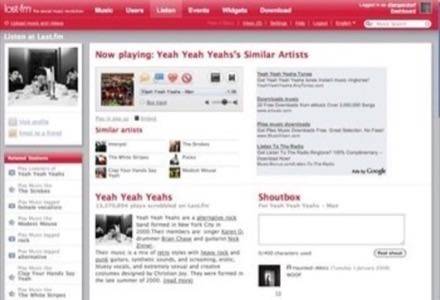
The site is also open to unsigned bands, who will share the ad revenue associated with their songs.
The process is almost too good to be true: Music fans simply go to Last.fm, which has an active community of 15 million active users in more than 200 countries. Its best known for the song recommendation engine that tracks the music-listening habits and links them to other fans with similar tastes. Search for an artist, listen to a song, and see a small billboard ad on the screen while the tune plays. People dont even need to register with the site, if they dont want to.
Fans can listen to any song three times before they are directed to one of Last.fms partners, including iTunes, Amazon, and 7Digital, where they can purchase the track. And just so were clear here, tracks on Last.fm are not downloadable, so people cannot put streamed music on a digital music player.
The CBS/Last.fm approach is not completely new. RealNetworks launched a service nearly three years ago that lets users stream 25 songs per month for free. Napster, launched in 2006, lets fans stream five songs for free before they are asked to ante up the credit card. Spiral Frog, the Peter Gabriel-supported We7, imeem, and others, offer similar services.
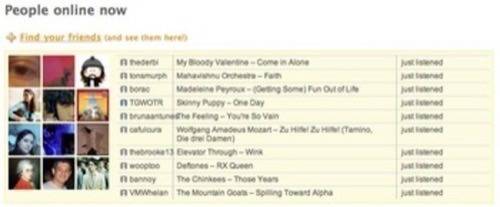
Streaming business models, however, have had limited success.
So back to community. Whats the big deal with the CBS/Last.fm almost-free, ad-supported streaming service besides the big media-name backing and the involvement of the major record labels and a slew of indies?
As Moonves said, Community is clearly the future.
In existing CBS content communities are TV shows from CBS, The CW, and Showtime, movies from Paramount, other TV stations, CBS Radio, CBS Interactive, even the Simon & Schuster book-publishing business. And lets not forget: CBS is the network broadcasting next months Grammy Awards, the music industrys equivalent to the Oscars.
So we can imagine every song, every artist played or featured on a CBS property most likely will be referenced, cross-referenced, and made available through Last.fm, giving CBS another way to reach like-minded consumers who want to share their interests with others.
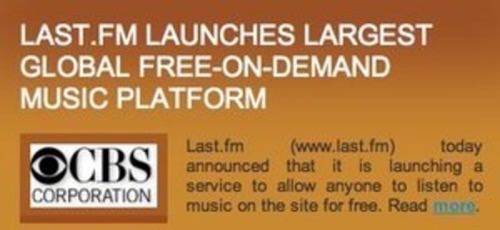
The more people go to Last.fm to hear what song was just played on “CSI:NY”, the more money CBS and Last.fm make off advertising and residual sales. Imagine at the end of the show a text crawl noting that the music tonight can be heard at Last.fm. On the Last.fm side of the equation, there can be season-long playlists from CBS properties, conveniently cross-referenced, tagged, and shared.
This is promising, not only for the consumers but for the majors themselves, IDC consumer audio analyst Susan Kevorkian told Wired. Digital technology holds a great deal of promise . . . artist and labels can sustain relationships with consumers well past the point that they have historically sustained them.
If you enjoyed this post, make sure you subscribe to the last100 RSS feed!

